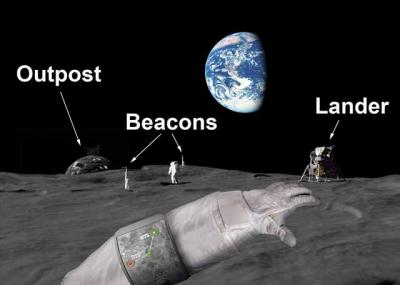
The Crazy Lune

 |
The Crazy Lune |
 |
|---|
      |
|
Budget and Timeline Figure 1 shows the specific parts and costs required to construct the transceiver for the lander. It is important to note that the PCB Fabrication will include two band pass filters and two low pass filters. The total cost for the lander transceiver is $205.39. The transceiver to be installed on the astronaut for the astronaut-lander link utilizes the same components as detailed in Figure 1. However, the transceiver for the astronaut-tag link requires a substantially more powerful power amplifier. The product information for this amplifier is given at http://www.amplifiertechnology.com/0.52-2.55-GHz-60W.html. Figure 2 shows the slightly modified parts list |
|
Figure 1. Component breakdown of individual components for astronaut-lander lander transceiver. Figure 2. Component breakdown of individual components for astronaut-tag astronaut transceiver. The total cost to build the three transceivers is $2589.37. However, the transceivers on the astronaut must be powered by batteries. These batteries would be in addition to any power source integral to the astronaut's space suit. We assume that the lander's power supply would be able to sustain the transceiver's power requirements, and thus would not require additional batteries. The radiolocation system protocol requires approximately 10,000 tags to accommodate multiple missions. "How RFID Works" (http://electronics.howstuffworks.com/gadgets/high-tech-gadgets/rfid3.htm) gives a high limit cost for a passive RFID tag as $0.20. However, considering the likely additional electronics necessary to implement CDMA on the tags, we set a budget for the RFID tags based on an expected approximate cost for each passive RFID tag as $0.50; therefore, the total cost of the RFID tags would be $5000. The proposed timeline allocates a total of 2 years, 1 month, and 10 days (10/12/09 - 11/22/11) to complete the entire project, which equates to 552 working days. Therefore, the labor budget must be for 4416 hours. Fortunately, the labor is not present for all phases of the project. The first phase of the project, which is only 42 working days, can be completed with only four engineers. The remaining 510 working days must be divided between approximately fifteen engineers and programmers working on the communication system in parallel with approximately fifteen engineers and programmers working on the location system and five engineers working on the power system. Once those three parallel phases are complete, approximately ten engineers must work on the integration phase. We assume an average annual salary of $80,000 per engineer/programmer, which is consistent with the experience required for the work. Using an approximated hourly rate of $38.50 for budgeting purposes, Figure 3 shows the labor cost breakdown. The total labor budget is $3,743,124. Figure 3. Labor budget breakdown assuming average hourly salary of $38.50. The overall projected timeline can be seen here.From the relative projection the enitre project is title for completion in 11/22/11 roughly two year overall. The red bar graph in the timeline figure indicate the completed portion and amount of time spend on it whereas the blue bar graph indicate the future projection. We also allocated $2000 to purchase the battery system to power the astronaut-lander and astronaut-tag links. This brings the total costs ($2000 + $3743124 + $5000 + $2589.37) * 130% to $4,878,530, which includes the 30% overhead costs for a small company. |
Home | Project | Communication | Location | Power | Budget & Timeline Tuesday, December 8, 2009 © 2009 The Crazy Lune. All rights reserved. |